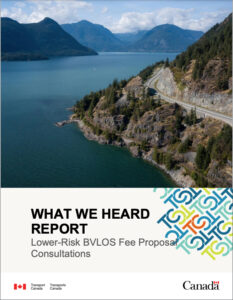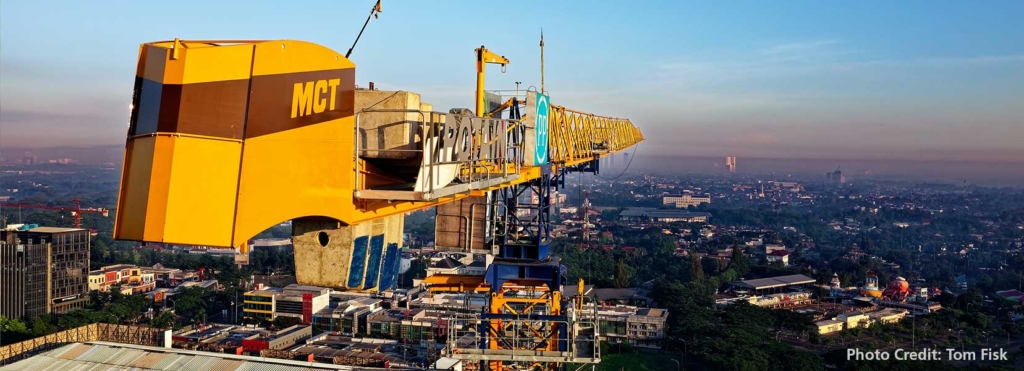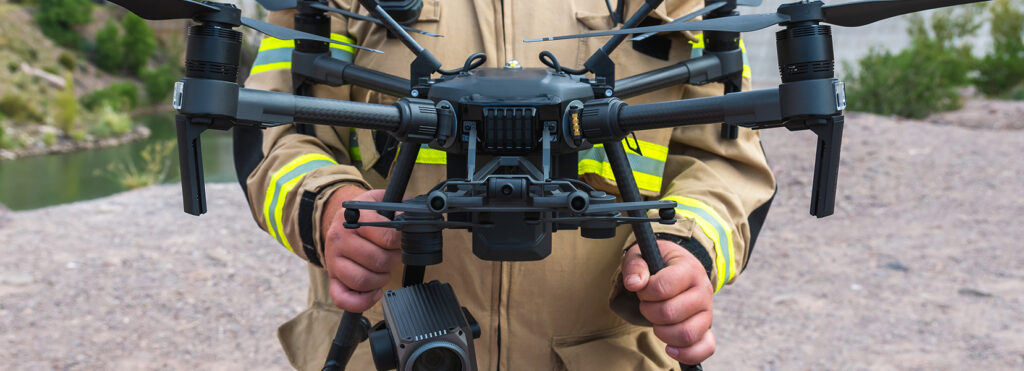What We Heard Report by Transport Canada – RPAS Operations Fee Proposal

Recently, Transport Canada released a “What We Heard” Report for the Lower-Risk Beyond Visual Line-of-Sight (BVLOS) RPAS Operations Fee Proposal consultations, which took place from May 19th to June 20th, 2021.
 The report is the latest artifact from the consultations on regulation development that started in January 2019. This second and latest report summarizes stakeholder feedback on a fee proposal outlining new and updated fees for services that would support proposed RPAS regulations.
The report is the latest artifact from the consultations on regulation development that started in January 2019. This second and latest report summarizes stakeholder feedback on a fee proposal outlining new and updated fees for services that would support proposed RPAS regulations.
The drone industry (formally known as the remotely piloted aircraft systems (RPAS) industry) continues to grow and expand, providing exciting new opportunities for recreational and commercial uses. A segment of drone operation known as Beyond Visual Line-of-Sight (BVLOS) is attracting a lot of attention. BVLOS is seen as essential to unlocking more of the economic potential of the RPAS sector in Canada. BVLOS allows RPAS to cover larger distances, collect more data with fewer deployments than would be required with VLOS operations all at a lower cost than with the use of traditional aircraft. In Canada, there is a unique potential for BVLOS operations in remote and rural areas particularly in economic sectors such as oil and gas and deliveries to remote communities.
Over 50 stakeholders submitted feedback on the fee proposal during the consultation period. Groups represented included; public safety organizations, training providers, manufacturers and service providers, and non-recreational RPAS operators.
Stakeholders will also have the opportunity to provide feedback on the proposed regulations once they are published.
For lower-risk BVLOS operations, the proposed regulations consider is necessary that payment of the fee(s) and limiting operations outside of controlled airspace and densely populated areas. Drone weight would be limited to 150kg or less. The operation would be limited to lower-risk activities and areas such as; delivering supplies to remote communities, first responder operations and wildlife surveys.
The proposed fee table includes a new fee category for lower-risk BVLOS services. This new fee category joins the 3 existing fee categories. Existing fees and fee applications have been updated. The proposed fees for the most basic level total less than $2,000.
The report organizes comments according to key components of each fee proposal. Overall the response to the fee proposal was mixed. Some parties supported the proposal and others had concerns over the addition of new fees and the increase of some existing fees. Not surprisingly there was support for continued collaboration during the regulatory process.
The theme of the comments regarding lower-risk BVLOS operations is to reduce the proposed fees and lower the financial burden on people such as recreational pilots, students and small business owners. Suggestions included putting more of the financial burden on large commercial operators.
Significantly, a new $1,200 fee for TC review and approval of operator compliance plans generated comments that compliance plan requirements must be made clear to help avoid rejections and then require operators to pay the fee again.
Also included are amendments to enable visual line of sight operation for drones weighing over 25kg up to and including 150kg, either away from people or over people, or in controlled airspace.
Clearly, progress in the drone space is becoming more complex as more innovative uses are conceived. Regulation development takes time but stakeholder inclusion is important. It takes time to do a good job however, the pressures to enable the expanding use of drone technology remain.







Responses